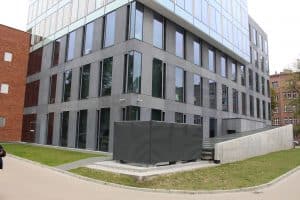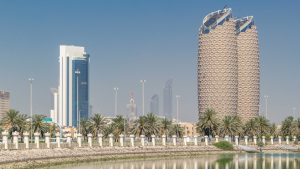Concrete cladding is a popular choice for both commercial and residential buildings, offering a range of benefits that make it a versatile and cost-effective solution for architectural design. In this article, we will explore the advantages of using concrete cladding for commercial and residential buildings, including cost-effectiveness, easy installation, and high thermal performance.
Cost-Effectiveness
One of the biggest advantages of concrete cladding is its cost-effectiveness. Concrete cladding is a cost-effective alternative to traditional building materials, such as brick, stone, and wood. This is because concrete cladding can be manufactured in large quantities, reducing the cost per unit. In addition, concrete cladding is a durable and long-lasting material, reducing the need for frequent maintenance and repair, and reducing the need to replace the panels over time.
Easy Installation
Another advantage of concrete cladding is its ease of installation. Concrete cladding panels can be manufactured in a range of shapes and sizes, and they can be easily cut and drilled to fit into the design of your building. In addition, concrete cladding is a lightweight material, making it easy to handle and install. This ease of installation can reduce the time and cost of installation, making concrete cladding a cost-effective solution for your building project.
High Thermal Performance
Concrete cladding also offers high thermal performance, helping to maintain stable temperatures within the structure. The use of several airtight layers within an insulated concrete panel can improve the ventilative energy efficiency of a building, while the internal skin of the panels provide good insulation to maintain stable temperatures. In addition, concrete cladding is a non-combustible material, offering a high level of fire resistance, making it ideal for situations where fire resistance is required.
Case Study: The Benefits of Concrete Cladding for Commercial Buildings
One example of a commercial building that demonstrates the benefits of concrete cladding is the National Museum of the American Indian in Washington, D.C. The National Museum of the American Indian is a four-story, 170,000 square foot building that showcases the rich cultural heritage of Native American peoples.
The National Museum of the American Indian features a number of benefits of concrete cladding, including:
- Cost-Effectiveness: The use of concrete cladding in the construction of the National Museum of the American Indian reduced the cost of the building, compared to traditional building materials.
- Easy Installation: The concrete cladding panels used in the construction of the National Museum of the American Indian were easily installed, reducing the time and cost of installation.
- High Thermal Performance: The concrete cladding panels used in the construction of the National Museum of the American Indian provide good insulation and high thermal performance, helping to maintain stable temperatures within the structure.
Conclusion
Concrete cladding is a versatile and cost-effective solution for architectural design, offering a range of benefits for both commercial and residential buildings. From cost-effectiveness and easy installation, to high thermal performance, concrete cladding provides a solution that is both functional and aesthetically pleasing.
The National Museum of the American Indian is just one example of the benefits of concrete cladding for commercial buildings. With its combination of cost-effectiveness, easy installation, and high thermal performance, the National Museum of the American Indian demonstrates the potential of concrete cladding to contribute to the success of commercial building projects.
For building owners and designers, concrete cladding is a smart choice that offers the benefits of cost-effectiveness, easy installation, and high thermal performance. With its durability and longevity, concrete cladding is sure to provide a long-lasting solution that will meet the needs of your building project for years to come.





